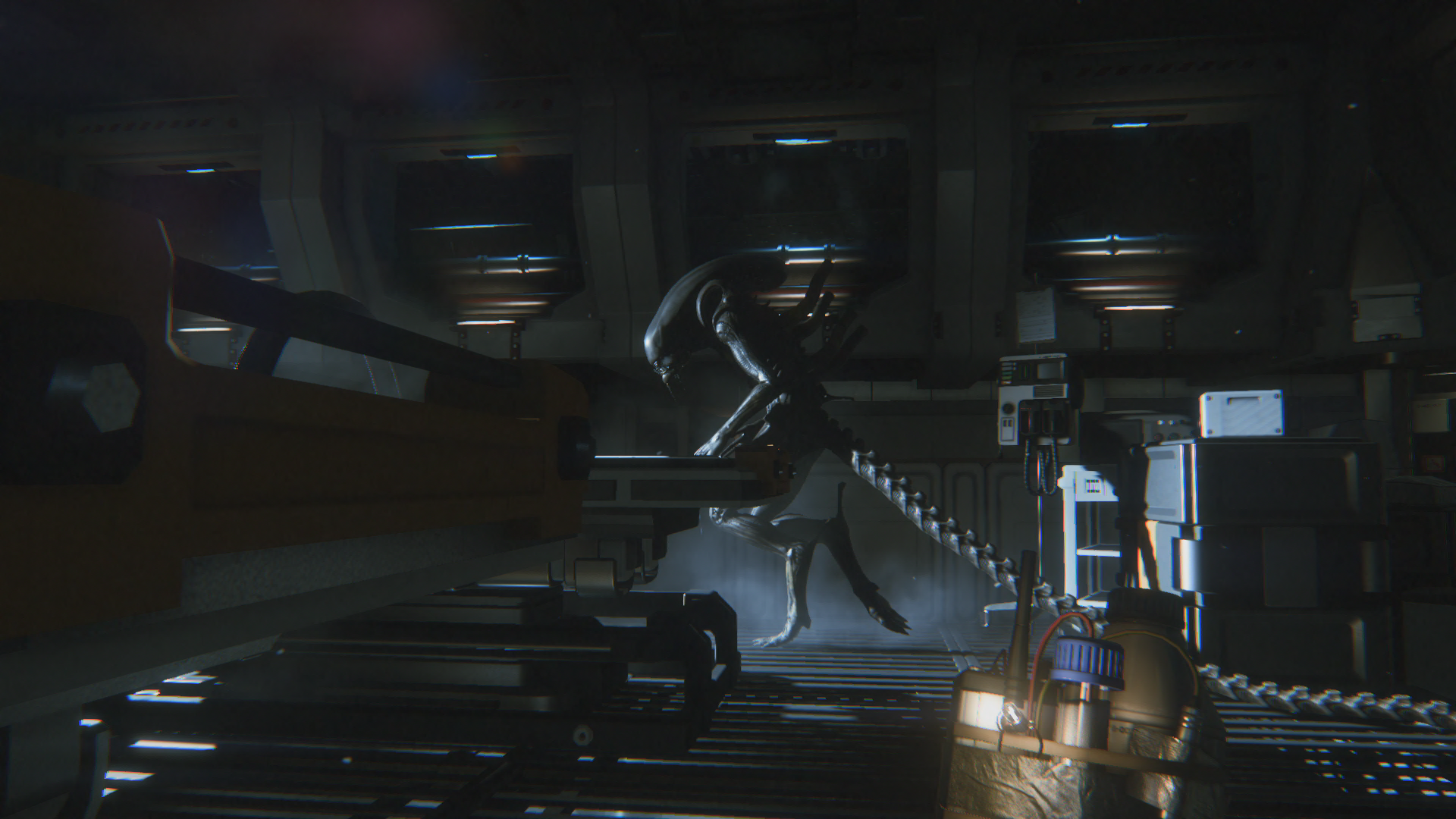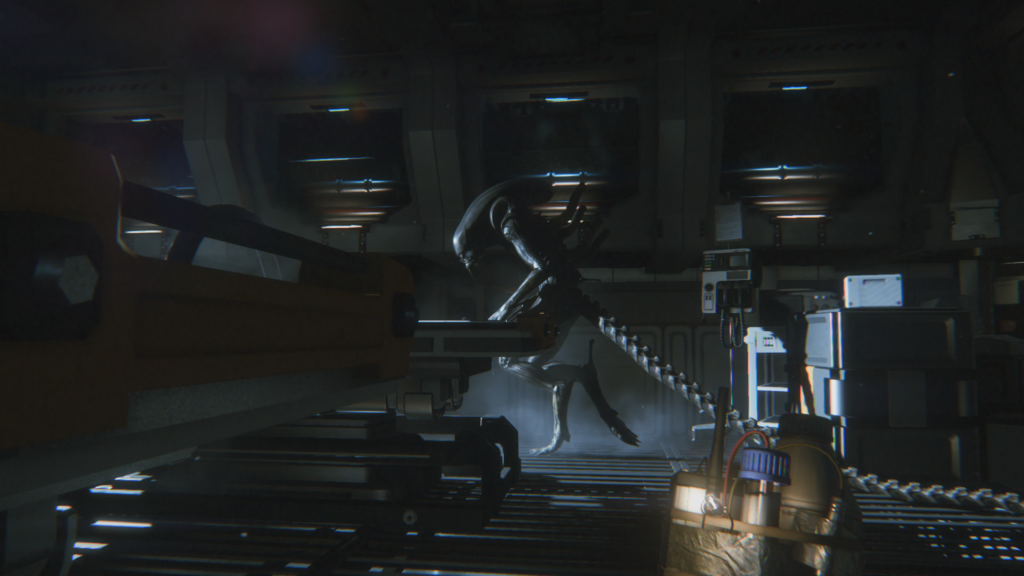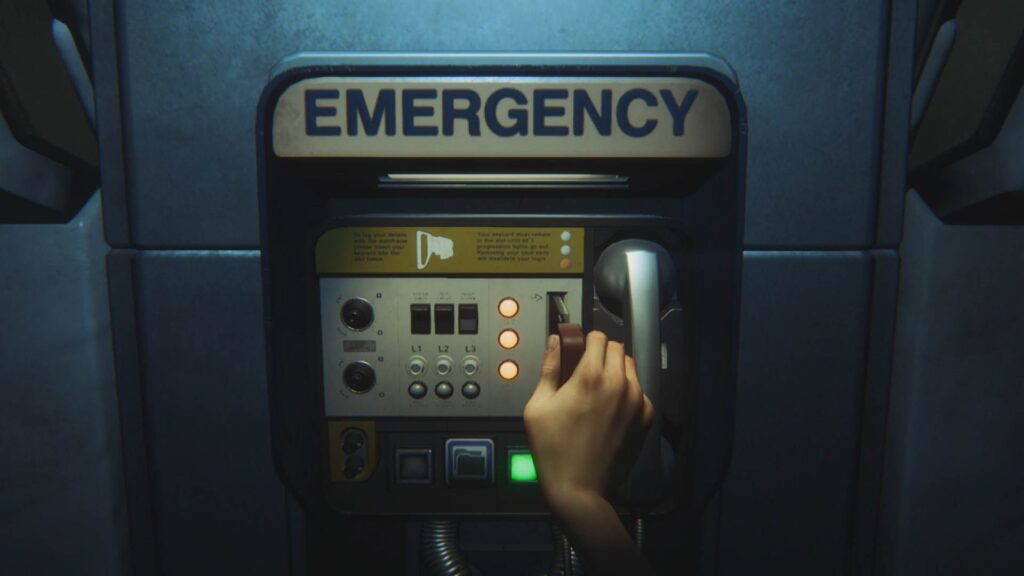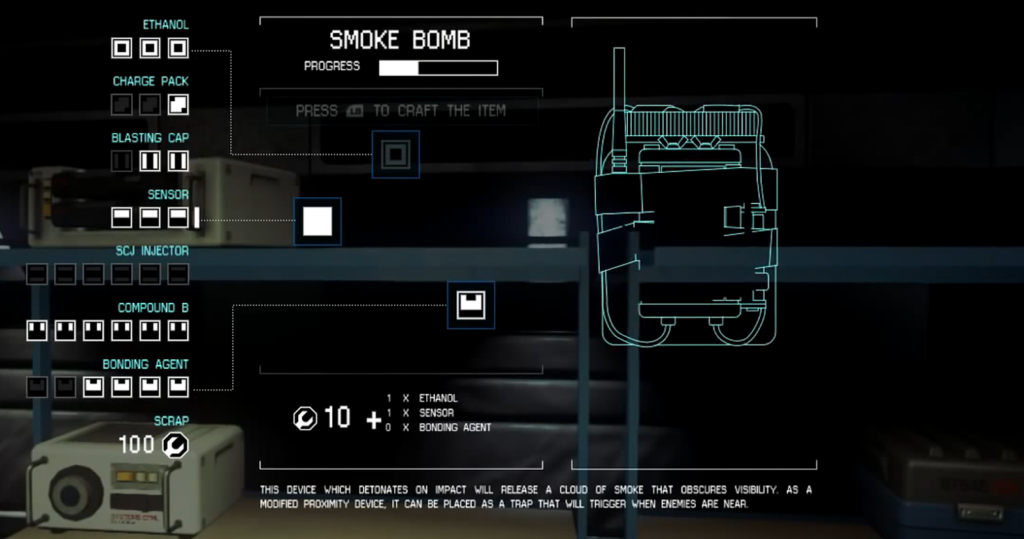
Review – Alien: Isolation
If you’re like me, the disaster that was Aliens: Colonial Marines left a bad taste in your mouth. I hated that game, and I feared that it permanently damaged the Aliens brand, at least as far as the video games were concerned. With that in mind, I was fairly skeptical of Alien: Isolation when it was first announced. It touted itself as a bone-chilling return to the franchise’s horror roots, but I had my suspicions; Colonial Marines was still fresh in my mind, and developer The Creative Assembly had worked almost exclusively on strategy games prior to this. You can imagine my surprise, then, when I sat down to play and learned that the game is actually pretty great.
ALIEN: ISOLATION
Available on: Xbox 360, Xbox One, PlayStation 3, PlayStation 4, PC
Reviewed on: PlayStation 4
Reviewer’s note: No downloadable content was played or purchased. The following review only takes the main game into account.
Alien: Isolation presents players with a brand new story set within the framework of the original films. You step into the shoes of Amanda Ripley, the daughter of the iconic Ellen Ripley, as she embarks on a mission to recover her mother’s flight recorder from the Sevastopol space station. Predictably, everything goes horribly awry, and she soon finds herself trapped aboard the station, fighting for her life against a litany of foes. She crosses paths with many different crew members and survivors over the course of the game’s very lengthy campaign, and some prove to be more hostile than others.
Though the game primarily encourages a stealthy approach, Amanda can fight back against her enemies in multiple ways. She acquires a few different firearms as the game progresses, though ammo is often in short supply. Thanks to a straightforward crafting system, she can create flares, smoke bombs, Molotov cocktails, stun batons, and more. She can log into junction boxes and reroute the station’s power as she pleases; this can bring old, crackly speakers to life, disable security cameras, open inaccessible doors, and more. On the whole, gameplay proves to be deeper than just “sneak-around-and-avoid-everybody,” and that’s a good thing, because your enemies will keep you on your toes.

In contrast to previous games, Alien: Isolation pits you against a single Alien throughout the campaign, and these encounters are where the game can thoroughly terrify you. The Alien utilizes dynamic and unpredictable AI to stalk you around Sevastopol. It will check places it’s found you hiding before. It will notice that you left a locker or vent open. It can even hear your motion tracker if you’re too close to it. Its complex behavior makes it a challenging and genuinely frightening enemy to face; you can’t kill it or consistently run away from it, so stealth is of paramount importance. The Alien is so formidable, in fact, that even on the lower difficulty levels, it will find you, and it will kill you. A lot. This can cause the game to dissolve into bouts of trial and error, and the frustration that arises can substantially detract from the tension. Unfortunately, the rest of the game’s enemies fail to conjure up that same sense of dread. Human foes and the robotic Working Joes may provide the occasional startle, but they can be dispatched fairly ready and rarely prove to be more than minor annoyances.
Another part of what makes the game interesting is how it approaches some of its core mechanics. While most games treat functions like opening doors as simple, scripted actions, Alien: Isolation treats them as real-time events. You may need to physically remove a lock from a door, for example, or play a quick hacking mini-game to access files on a computer. You’re in full control of these events, and enemies can interrupt you as you perform these actions, so you shouldn’t stop to cut open a lock with a Working Joe on your tail.

That said, my favorite example of this is how you save the game. Scattered throughout Sevastopol are emergency call-boxes that you can interact with. In order to attempt to save the game, you need to insert a keycard into them and leave it there for a few seconds. Again, this is happening in real-time, so if the Alien is in pursuit, saving becoming a tense and desperate race against time. If it catches you before the box’s countdown finishes, you’re dead, and your save doesn’t count. It’s a unique, creative approach that thrills and infuriates in equal measure. I’ll openly admit that getting stabbed by the Alien at the last second and having to play the same 15 minutes of level over and over again had me screaming in anger instead of fright more than once.

Beyond gameplay, however, the developers absolutely nailed Alien: Isolation’s atmosphere. Textures look very crisp on the new consoles, but it’s the additional detail that brings the overall look to the next level. Dynamic lighting takes center stage as damaged lights flicker and swing from their hinges. Computer monitors cast eerie glows into lonely, abandoned rooms. Air filtration systems pump ominous fog through many a desolate hallway. The blood-red eyes of a hostile Working Joe pierce through the darkness, cold and unflinchingly focused. On the other hand, human characters present more of a mixed bag; though the pre-rendered cutscenes look great, in-game character models suffer from bland facial expressions and poor lip-syncing. Voice acting varies in quality as well, with some lines falling short of the emotion and believability they need. The icing on the cake, however, is the game’s polished presentation. Menus and HUD elements utilize blocky computer graphics and film grain, which further immerse the player into Amanda’s nightmare scenario. It closely resembles the original 1979 film, and the plot even leverages some of that movie’s themes and narrative constructs to great effect.
I’m well aware that the game came out back in October, so you’ve likely decided whether or not it interests you by now. However, if you’re still on the fence for some reason, I encourage you to give it a try. For all its other faults, Alien: Isolation is a unique and very well-made horror game, and The Creative Assembly should be praised for their work in bringing this project to life. It may be too long for its own good, and its trial-and-error gameplay may prove too annoying for some, but there’s no denying the game’s sharp presentation and absolutely gripping atmosphere; this is a game that begs to be played in the middle of the night with headphones in. I don’t scare easily, but Alien: Isolation terrified me; if you give it a chance, it might just terrify you, too.







![[ID: V79UjxxPe-4] Youtube Automatic](https://lastminutecontinue.com/wp-content/uploads/2024/04/id-v79ujxxpe-4-youtube-automatic-360x203.jpg)